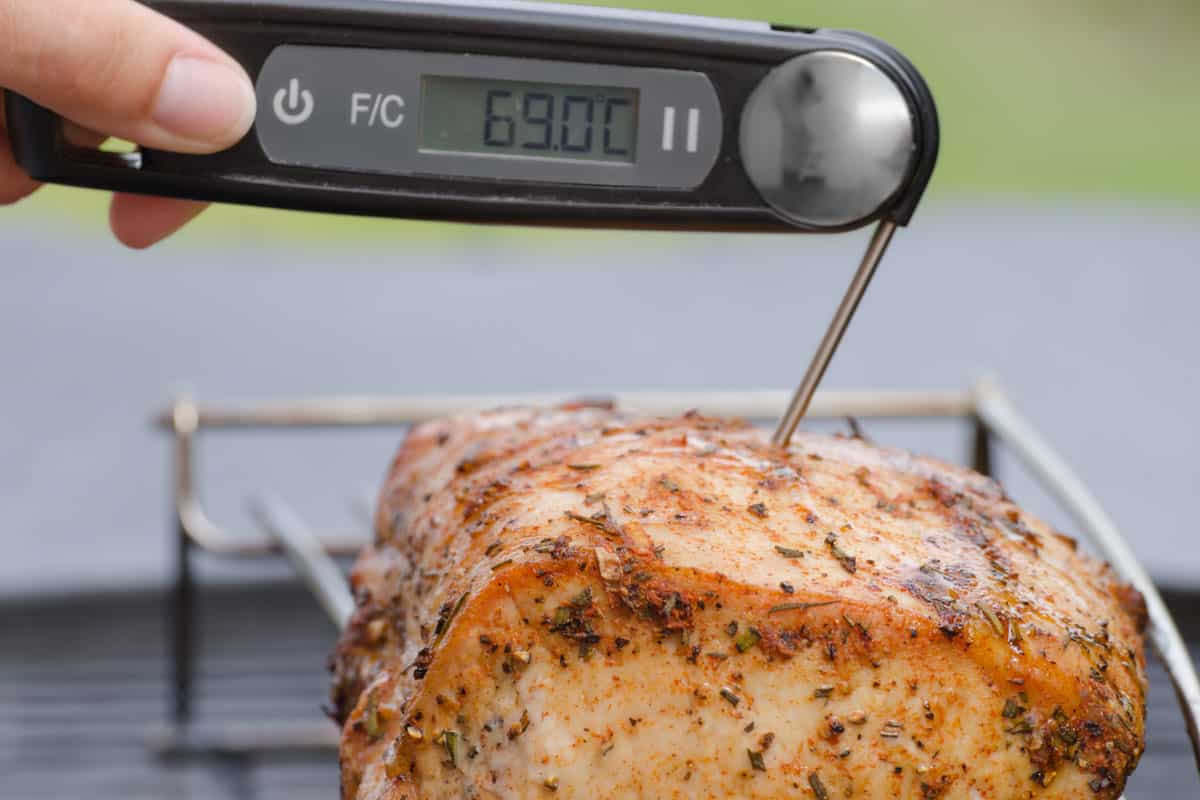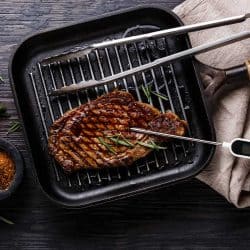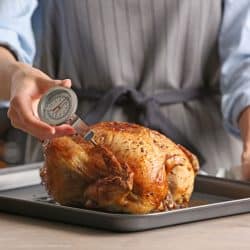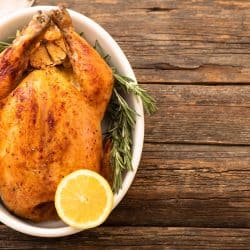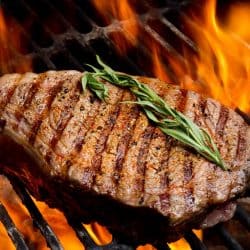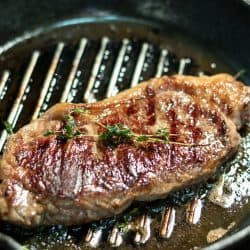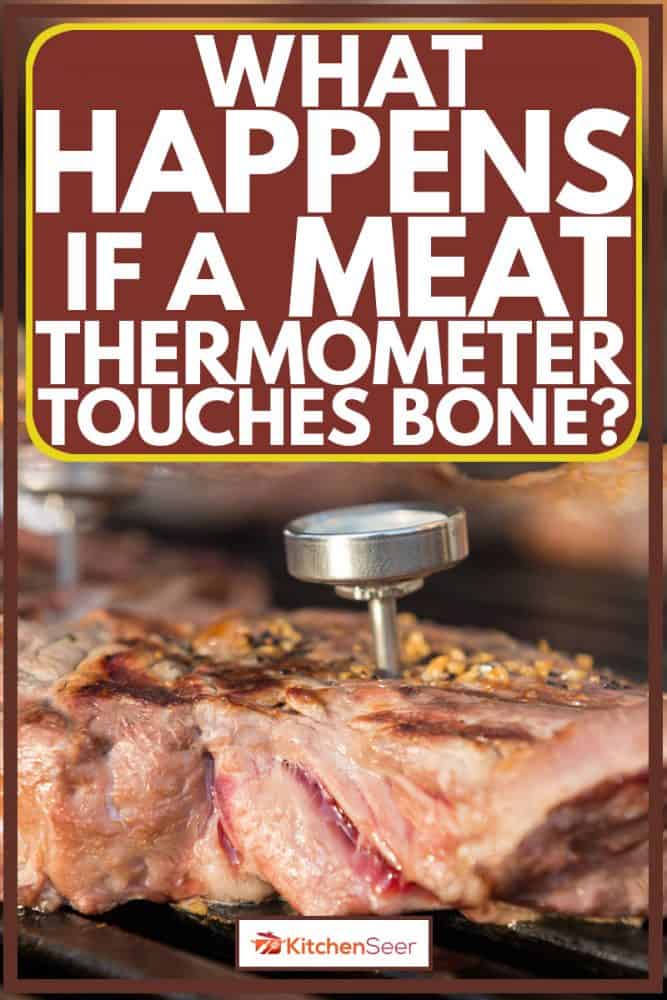 The best way to know if your meat has truly reached the proper temperature to be cooked all the way through is to use a meat thermometer. The reading will give you the internal temperature for the dish you're cooking. But what happens if your meat thermometer touches bone?
The best way to know if your meat has truly reached the proper temperature to be cooked all the way through is to use a meat thermometer. The reading will give you the internal temperature for the dish you're cooking. But what happens if your meat thermometer touches bone?
If your meat thermometer touches bone, you will get a higher temperature reading. But if you measure the meat near the bone, it may read as much as 10 degrees lower than the rest of the cut. It's always best to find the densest part of the meat and steer clear of the bone when reading temperature.
Let's take a look at how this affects different cuts and types of meat. Each one is slightly different and will have a best-case scenario for where to get a reading.
What Happens When Your Meat Thermometer Touches Bone?
The advice for this is all over the board. Sayings range from "the bone is the coldest part of the steak" to "a bone-in pork shoulder conducts deep to the center" to "stay away from the bones of chickens."
There's a great article here that goes into the conductivity of the various cuts of meat, but the bottom line is to stay away from the bone in order to get the most accurate temperature reading of your meat. The bone conducts heat differently than the flesh, and it's the flesh you want to be cooked properly.
If you're not even familiar with meat thermometers, they are basically a thermometer attached to a long metal probe that can be sunk into the fleshy part of your cooking meat. As the probe heats up, it sends the temperature to the thermometer dial which can be either digital or dial. Typically, meat thermometers measure temperatures between 140-200 degrees F.
This best-selling thermometer has an easy digital readout and works not just for meat, but for jams and candies as well.
Click here to see this on Amazon.
This one folds shut for easy storage and has a backlit readout.
Click here to see it on Amazon.
Where Do You Put A Meat Thermometer In A Chicken?
For all parts of the chicken, the minimum temperature you're seeking is 165 degrees F. If you're cooking a whole roasting chicken, you want to insert your thermometer into the thigh at the interior near the breast, but not touching the bone.
Where Do You Put A Meat Thermometer In A Turkey?
Turkeys are much larger than chickens, so they will take longer to cook. But temperature-wise it's the same story. Turkeys should be cooked to 165 degrees F at a minimum. Just like chicken, to ensure doneness, you want to insert the probe at the inner part of the thigh nearest the breast without touching bone.
Unlike the chicken, you may want to use two thermometers with turkey. The second thermometer should be a leave-in, oven-safe variety so you can check the temperature as it cooks without losing valuable heat from your oven by opening and shutting the door to use the probe thermometer.
These just stick into the bird and have an easy-read dial through your oven window. This one is super affordable and can stay in the oven through the entire cooking process.
Click here to see this one on Amazon.
Where Do You Put A Meat Thermometer In Beef?
Because there are so many cuts of meat, there is some variation in how we measure temperatures for beef. But basic rules are that for ground beef, you want a minimum of 160 degrees F and for chops, roasts, and steaks, you want a minimum of 145 degrees F.
In chops, roasts, and steaks, you want to insert your thermometer probe into the center of the thickest part of the meat, but keep it away from bone, fat, or gristle. Just like bone, your fat and gristle are going to cook and conduct at different temperatures than the meat. The meat, particularly with ground beef, is always the thing we need to be sure is cooked sufficiently.
For hamburger patties and chopped steaks, you want to insert your probe into the side and go longways across your patty rather than from the top.
How Can You Tell If Meat Is Cooked Without A Thermometer?
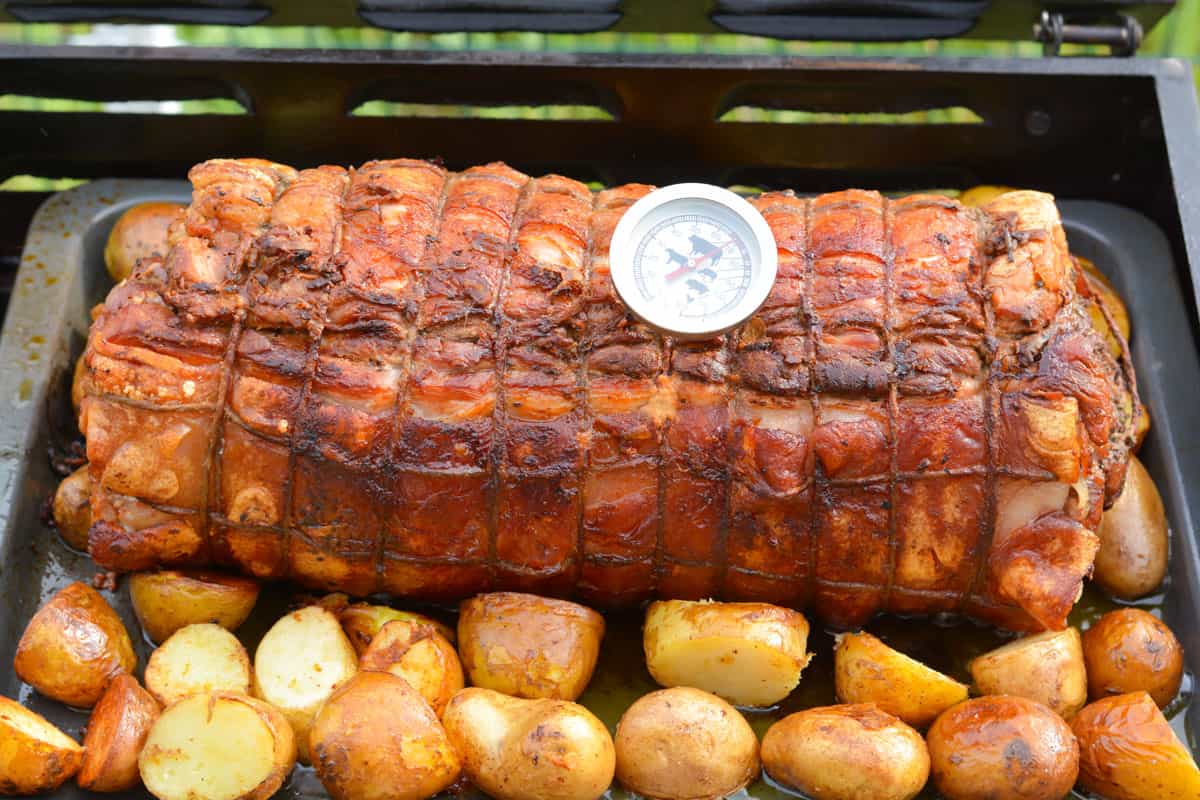 Meat thermometers can be purchased for under ten dollars, so it's a good idea to get a meat thermometer to be absolutely sure your meat is cooked properly. But if you need to know right this minute and cannot wait for the purchase, we have a few tips.
Meat thermometers can be purchased for under ten dollars, so it's a good idea to get a meat thermometer to be absolutely sure your meat is cooked properly. But if you need to know right this minute and cannot wait for the purchase, we have a few tips.
Use a cake tester. If you stick it into a steak and it's cold, your meat is still too raw. If it's body temperature, you have a rare to medium-rare steak, if it's hot, then your steak is well done. You can also use it on fish like tuna in the same way.
With poultry, if you poke the skin of your bird with a knife tip and the juices run pink, it's not done. But if the juices run clear, your bird is cooked.
With fish, the adage is 8 minutes per inch thickness of fish. So if you have a large tuna or swordfish steak, it's going to take longer, but a slim filet of tilapia is going to cook rather quickly.
Does A Meat Thermometer Work In Liquid?
Obviously the poke-in kind that you leave in during cooking won't work, as their probes are only about four inches long. But some meat thermometers come with a clip to leave on the side of a pot or pan and serve dual usage. Candy thermometers and those used for deep-fat frying will also work.
But you'll have to make sure to check the temperature range because the boiling point of some liquids is higher than the range of some meat thermometers.
This probe dial-style thermometer measures from 50 degrees F all the way up to 550 degrees F, so it will work for both meats and liquids.
Click here to see this on Amazon.
Remember, whether you use a thermometer or a handy trick like a cake tester to determine the temperature of your meat, it's important to stay away from the bone. The bone will measure at a different temperature that won't be accurate.
If you enjoyed this post, please check out these others below:
Should the Water in a Bain-Marie (Double Boiler) Be Hot?
Boning Knife vs. Fillet Knife: What’s The Difference?




